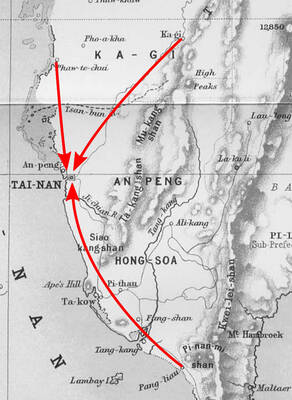Surfing, drugs and sex are all central concerns of this novel, though none of them is at its heart. Its essence instead is youth, and the thrill of danger, something the author presents as central to youth’s particular take on the world.
Tim Winton is one of Australia’s most successful novelists. He gets reviewed in prestigious publications, and yet at the same time is popular and accessible. He’s been short-listed for the UK’s Man-Booker prize twice, and this new novel demonstrates why he would attract the judges, while also suggesting why they might finally decide to give their prize to somebody else.
It’s narrated by a man in his late 40s remembering his life as a teen. Unwilling to follow his parents’ directives, he teams up with an even more rebellious adolescent and together they teach themselves to surf. Soon they come under the influence of the 30-something Sando, a loner on the beach who turns out to be an international surfing celebrity.
Sando introduces the boys to three spectacular surfing locations. First is a remote beach where the waves are long and regular and their activities are overlooked by a lone great white shark. Next comes a peninsula where, when the weather is right, huge waves break up against jagged cliffs. Finally the three go out to a terrifying offshore site where a barely submerged rock platform causes the waves to rear up in near-vertical configurations.
The time is the 1970s, and Sando lives in post-hippie splendor in a spacious open-plan house in the bush near the coast. With him is Eve, a former skiing phenomenon who has wrecked her knee and limps around in tight-lipped frustration. After Sando and the second boy have successfully surfed all three locations (the narrator has dared not confront the last), the two depart for Bali, leaving the abandoned boy to seek consolation with the equally abandoned-feeling Eve, and possibly fathering a child with her.
This is in essence an extrovert, outdoors, risk-taking world being described by an introverted, thoughtful and cautious literary artist. The novel at the start has the feeling of a vigorous narrative aimed, perhaps, at older teenagers. It’s only as you progress into it that you begin to be aware of its complexities and ambiguities, and eventually come to realize that in fact they characterize the work.
That the target-readership can’t really be adolescents at all is demonstrated by the sexual relationship between Eve and the boy including the dangerous practice of erotic asphyxiation — she produces a pink cellophane bag, complete with strap and sliding brass ring, and asks him to all-but throttle her. The experience allows the boy, when a paramedic in adult life, to diagnose a supposed suicide-by-hanging as in reality no such thing. But this subject matter effectively removes the book from any teenage-reading category, leaving it in a limbo somewhere between an exciting adventure and a darker speculation on human motivation and need.
Winton is clearly pushing the boundaries of the dangerous sports genre to include, despite the everywhere laconic style, some questioning thoughts. His conclusions are usually ambivalent, and indeed ambiguity characterizes his attitudes in other spheres as well.
The book appears at first to be taking a homoerotic direction, especially when Sando and the second boy leave on their protracted Indonesian jaunt. The author goes to the trouble of pointing out that the novel takes place in an innocent era when such friendships would have raised few eyebrows. Yet no such development takes place, and instead the pair become involved in narcotics, resulting in the boy meeting an early death in a Mexican bar in a drug-dealing arrangement that goes wrong.
So — pro or anti surfing in possibly lethal situations? Pro or anti teenage drug use? Pro or anti the outer reaches of sexual experimentation? Winton offers a sphinx-like stare, and his final position on all these issues remains a fascinating, but to the last undivulged, secret.
The novel’s style similarly occupies a position mid-way between extremes. It’s both literary and colloquial, lovingly evocative of gaudily colored Australian landscapes, but ever on the lookout for possible verbal indulgence, and often terse and clipped as a result.
Maybe all this is a result of Winton the writer being what his narrator is in his fiction — a middle-aged man describing the carefree indulgence of youth. Naturally the thrills of risk-taking courted by the two boys and their perennially youthful mentor are going to be viewed more skeptically at 45 than at 14. But also seeing many sides of any question, as Winton appears to do, has long been an admired characteristic of the novelist. A doctrinaire intransigence is something best left to proselytizing missionaries, and Winton is a very different kind of person.
The title, Breath, refers to many things — the two boys’ experiments in hyperventilation before diving into a river and holding on to a tree root until their lungs almost burst, and Eve’s preferred sexual technique, but also youth and life itself — a series of breaths between dark and dark which, if we’re lucky, we can do with what we please, except prolong them indefinitely.
This novel is in essence serious holiday reading. This may sound like a paradox, but the book itself is nothing less than paradoxical. There’s more to Winton than meets the eye, though possibly less than he would like you to think there is as well. He may court sensation, but he’s also a neat and efficient craftsman. These two qualities combine better at some times than at others, but either way they allow here for the production of an engaging exercise in the always problematic art of novel-writing.

The Taipei Times last week reported that the rising share of seniors in the population is reshaping the nation’s housing markets. According to data from the Ministry of the Interior, about 850,000 residences were occupied by elderly people in the first quarter, including 655,000 that housed only one resident. H&B Realty chief researcher Jessica Hsu (徐佳馨), quoted in the article, said that there is rising demand for elderly-friendly housing, including units with elevators, barrier-free layouts and proximity to healthcare services. Hsu and others cited in the article highlighted the changing family residential dynamics, as children no longer live with parents,

Oct 20 to Oct 26 After a day of fighting, the Japanese Army’s Second Division was resting when a curious delegation of two Scotsmen and 19 Taiwanese approached their camp. It was Oct. 20, 1895, and the troops had reached Taiye Village (太爺庄) in today’s Hunei District (湖內), Kaohsiung, just 10km away from their final target of Tainan. Led by Presbyterian missionaries Thomas Barclay and Duncan Ferguson, the group informed the Japanese that resistance leader Liu Yung-fu (劉永福) had fled to China the previous night, leaving his Black Flag Army fighters behind and the city in chaos. On behalf of the

I was 10 when I read an article in the local paper about the Air Guitar World Championships, which take place every year in my home town of Oulu, Finland. My parents had helped out at the very first contest back in 1996 — my mum gave out fliers, my dad sorted the music. Since then, national championships have been held all across the world, with the winners assembling in Oulu every summer. At the time, I asked my parents if I could compete. At first they were hesitant; the event was in a bar, and there would be a lot

The election of Cheng Li-wun (鄭麗文) as chair of the Chinese Nationalist Party (KMT) marked a triumphant return of pride in the “Chinese” in the party name. Cheng wants Taiwanese to be proud to call themselves Chinese again. The unambiguous winner was a return to the KMT ideology that formed in the early 2000s under then chairman Lien Chan (連戰) and president Ma Ying-jeou (馬英九) put into practice as far as he could, until ultimately thwarted by hundreds of thousands of protestors thronging the streets in what became known as the Sunflower movement in 2014. Cheng is an unambiguous Chinese ethnonationalist,